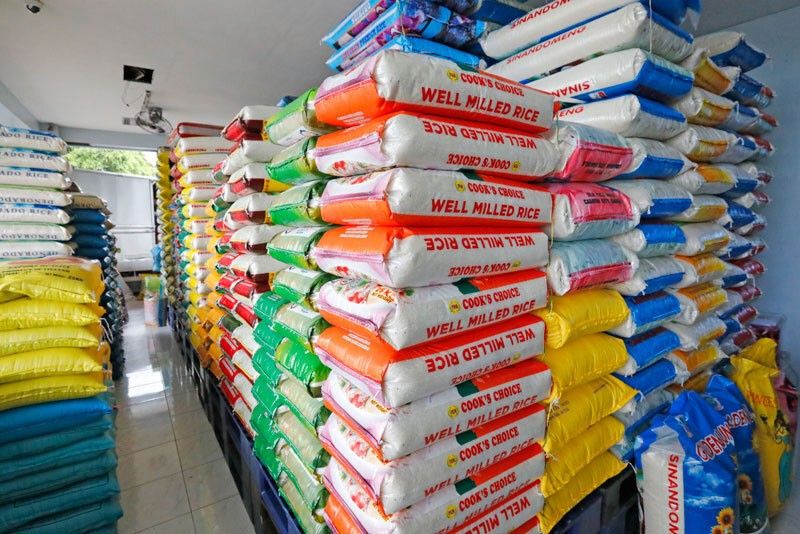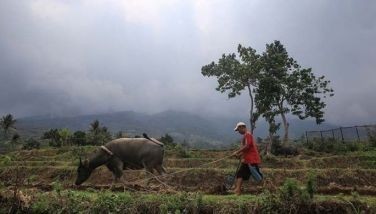Rice imports eyed anew amid Karding damage

MANILA, Philippines — With large swaths of farmlands in Luzon flattened by Super Typhoon Karding, the country may have to resort to more rice importation and possibly at significantly higher cost due to the continued weakening of the peso.
Latest data from the Department of Agriculture (DA) showed damage to agriculture due to Karding reaching P1.29 billion.
The DA said the typhoon devastated 141,312 hectares of agricultural areas and 72,231 metric tons of agriculture products in the Cordillera Administrative Region (CAR), Ilocos Region, Central Luzon, Calabarzon and Bicol.
Affected commodities aside from rice were corn, high-value crops as well as livestock, poultry and fisheries.
Reports said 138,843 hectares of rice lands were affected and 63,115 MT of rice valued at P959.8 million were lost.
“Rice is the most affected as far as commodities are concerned. Based on this, we are looking at its effect on our supply situation,” DA spokesperson and Undersecretary for consumer and political affairs Kristine Evangelista told reporters yesterday.
“We are coordinating with them, how (the damage) will affect the sufficiency, not only the supply, but more importantly the sufficiency of rice that comes to Metro Manila, considering the typhoon hit Central Luzon, our major source of vegetables and rice,” Evangelista said.
While the country’s rice stocks are still adequate due to previous large imports and ongoing harvest in areas not affected by the super typhoon, the prospect for year-end stocks for 2023 may be different, according to Federation of Free Farmers (FFF) national manager Raul Montemayor.
“Our big problem will be low carryover stocks going into 2023. Harvests were already expected to decline due to high fertilizer and fuel prices so the damage to crops due to the typhoon will further reduce supply,” he said.
The country is projected to have a year-end rice stock covering 60-70 days.
But to be safe for next year, a 100-day buffer stock would have to be built ahead of the dry planting season, FFF chairman and former agriculture secretary Leonardo Montemayor said in a separate phone interview.
“We do not know yet the extent of importation that will happen… But the comfortable buffer stock is 100 days. The ending stocks are meant to cover the first three months of the next year before the dry season crop in the second quarter,” he said.
If damage to rice lands in Central Luzon would turn out to be worse than expected, the country would definitely have to import big, Montemayor said.
“The peso’s devaluation will translate to more expensive imported rice. So the roll out of subsidies, income support should be urgently done for farmers to replant again,” he said.
Advance order
For Albay Rep. Joey Salceda, the country should consider making advance order of imported rice, in anticipation of surge in prices, especially amid the weakening of the local currency.
“We can advance the rice that we ordered, the imported rice... from Asian brothers,” he said in a radio interview.
Salceda is also pushing for the lifting of the five-hectare limit in the ownership of agricultural land in the country.
He said the country’s agriculture has been “deprived of capital” since 1987 with the enactment of Comprehensive Agrarian Reform Program (CARP) law.
“That destroyed our agriculture. You removed the landlords and replaced them with government but the government runs away with the farmers’ fertilizer, seedlings, insecticide,” he said.
Salceda maintained the government has been a “bad land owner” responsible for leaving the country with lands that are not productive.
The lawmaker added that if the private sector were again allowed to manage agriculture, especially the unproductive lands, productivity would increase.
The DA, meanwhile, said it is ready to extend needed assistance to farmers affected by the typhoon.
Aside from rice seeds, corn seeds and vegetable planting products, DA said it would distribute necessary drugs and medicines for the livestock and poultry sector to help it recover from its loss.
The Bureau of Fisheries and Aquatic Resources, for its part, will disperse fingerlings and fishing paraphernalia to help affected small fishers.
To ensure the immediate rehabilitation of affected areas, the DA said it would be tapping the P500-million Quick Response Fund.
It has also set aside financial assistance, which may be accessed under the Survival and Recovery Loan Program of the Agricultural Credit Policy Council.
For Metro Manila, the DA hopes to stave off price increases especially for rice and vegetables, as it is looking for alternative sources of basic commodities.
“We are looking at other places where we can get rice for Metro Manila, besides Central Luzon. If we can ensure the sufficiency of supply in Metro Manila, I hope the price will not move,” DA’s Evangelista said.
She said the DA is currently assessing the extent of damage to agriculture in Region 1 and in Nueva Vizcaya in Region 2, which can be alternative sources of rice.
“When it comes to vegetables, we are looking at Region IV-B, given that Region III and Calabarzon have been affected. Region IV-B can also be a source and Metro Manila can import from them,” Evangelista said. – Sheila Crisostomo
- Latest
- Trending

































